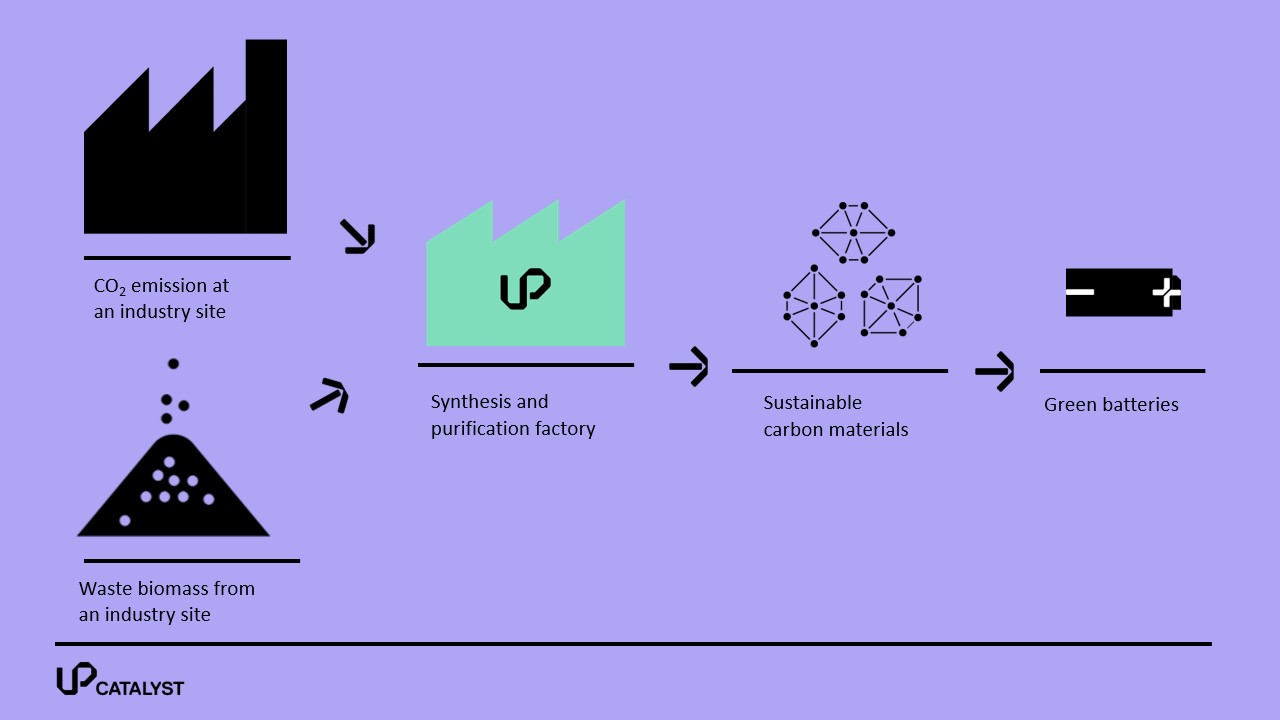Estonian technology startup UP Catalyst in partnership with the National Institute of Chemical Physics and Biophysics (NICPB) begins developing an automated process to produce sustainable carbon out of CO2 and biomass which characteristics can be adapted to any potential application. Thus, making it one of the most multipurpose materials in the world. The 2-year project aimed at developing the process has secured € 1.2M from Enterprise Estonia (EAS). Its implementation is crucial for the ton-scale production of carbon materials to start in 2025 and subsequent construction of the pilot plant by 2027.
The project is a supportive milestone to the UP Catalyst technology scale-up as it aims to automate carbon material purification and characterization on an industrial scale through a pilot system. This allows the process to be easily used in the future for a variety of commercial purposes. Therefore, the commercial and environmental impact could be huge considering the vast range of applications of carbon materials from electric vehicle batteries to paints & coatings, semiconductors, and biomedicine.
Purifying activated carbon is not something new. The novelty of this initiative lies in creating a solution that is able to function with both UP Catalyst technologies: pyrolysis and electrolysis. Dr Einar Karu, CTO at UP Catalyst, says: “The produced activated carbons differ significantly on the composition and proportion of the metal salts, as they derive from different technologies and raw materials.” He continues: “A common demineralization system will make our production more efficient and help us create end-products with specific properties tailored to our customer’s needs”.
The focal point of the scientific research is the characterization of carbon materials for energy storage applications. Battery cell chemistry varies from manufacturer to manufacturer. In some cases, higher purity carbon is preferred, in others not. Dr. Kerli Liivand, scientific researcher at NICPB says: “We want to achieve a uniform result higher in purity, which will be tested to ensure the performance of the material in battery electrodes. But we will also have the know-how to adjust to specific requirements”, she concludes.
By successfully fulfilling the project’s goals, the level of readiness of the company’s production technology will be increased from TRL3 to TRL5. “UP Catalyst technology is a powerful weapon to mitigate the climate emergency”, said UP Catalyst’s CEO, Dr Gary Urb. “With this grant we are one step closer to upscaling and capturing thousands of tons of CO2 annually. It’s just a matter of time before we offer the biggest variety of sustainable carbon ever created”, he added.
UP Catalyst has been successfully producing carbon materials on a kilogram scale since 2021. The aim for 2030 is to produce 300kt of material out of 1Mt of CO2 annually. The first shipping pilot container reactor is currently being built which will be able to absorb 10 T of CO2 and convert it into 2.7 T of valuable carbon nanomaterials and graphite.


